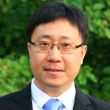09:00 - 10:30 Making T&D networks fit for wind integration
Integrating wind power into the electricity market


Room: Hall D
Distributed generation can offer clear benefits but also challenges for existing distribution systems. Wind and photovoltaic power from rural areas cause voltage fluctuations and over-voltages after disturbances. High-voltage ride through (HVRT) testing procedures, pilot projects, guideline and code drafting all help to address the HVRT requirement for distributed generation. Using smart components such as line voltage regulators and smart transformers, which include power-electronics and reactive-power compensation, are among other ways to stabilise distribution-level voltage. Applying International Electrotechnical Commission (IEC) standards, ensuring cybersecurity and deploying real-time data exchange communication between wind farms and the distribution system operator (DSO) can easily control and facilitate the integration of more wind power into distribution networks.
You attended this session?
Learning objectives
- Include the HVRT requirements into the grid codes;
- Propose smart components with power-electronics to mitigate distribution-level voltage fluctuations and rises in rural areas, both by real experience and using simulations;
- Enhance data exchange between wind farms and DSOs by ongoing standardisation and deployment of modernised and cyber-secure communication.
This session will be chaired by:

Presenter

Co-authors:
Peng LI (1) F Thierry COSTE (2) Olivier CARRE (3) Nicolas GIRARD (1)
(1) Maïa Eolis, Lille, France (2) EDF R&D, Saclay, France (3) ERDF, Paris, France
Presenter's biography
Biographies are supplied directly by presenters at WindEurope Summit 2016 and are published here uneditedPeng LI obtained his Master Degree from Tsinghua University, China in 2003 and Ph.D from Ecole Central de Lille, France in 2009. From then on, he works for Maia Eolis, a wind farm owner and operator in France, for SCADA, substation automation and electrical engineering projects.
Abstract
Dynamic data exchange method between DSO and wind farms for smart grid applications
Introduction
The integration of wind farms to smart grids like conventional power plants is one of major challenges to improve the grid flexibility. The implementation of ancillary services needs not only local electrical capabilities but also remote dynamic data exchanges between DSO and wind farms.
The traditional data exchange system in France from DSO regional control centers to wind farms has been standardized in 2005 and industrially deployed from 2010. For every wind farm, a regional point-to-point data link via dial-up modems must be implemented for a few remote control functionalities, such as disconnection and reconnection, real power curtailment and reactive power limitation orders.
In the most cases as designed, this communication is established by modem calls only when it’s needed several times a year according to the DSO or TSO maintenance schedule, far behind the future dynamic requirements. Hence EDF R&D, ERDF and Maïa Eolis work tightly together since 2014 for the application of real-time data exchanges based on Ethernet communication method, especially applied by IEC 61850, IEC 61400-25 and IEC 60870-5-104 protocols.
Approach
The main idea of this work is to reconstruct the data link from DSO to wind farms by a continuous Ethernet real-time communication for data acquisitions and control possibilities. Based on a good understanding of DSO requirements and wind farm capacities, tremendous works of several aspects, focused on communication protocols, physical layer transmission media, application functionalities and cybersecurity, have been studied thanks to a versatile knowledge of information technology, electrical engineering and automation.
Main body of abstract
The functionality specifications and the communication architecture have been widely discussed at the beginning of this work. The data flow for different operations, for instance ancillary services, forecast data and maintenance program, is defined according to the technical characteristics of each function.
The IEC 60870-5-104 protocol is implemented for an integration to the current DSO SCADA system. In parallel, the XMPP (Extensible Messaging and Presence Protocol) web service mapping for IEC 61850 is achieved as an alternative solution for a comparison. This is a pioneer industrial work because this technology named as IEC 61850-8-2 is still in draft status in IEC standardization. In replacement of the current cable wirings, the local interface with wind farm equipments are modernized by MMS based IEC 61400-25 and IEC 61850 protocols for completing the whole data transmission chain.
Several cybersecurity functions have been implemented according to IEC 62351, such as encryption with SSL/TLS, end-to-end security and certificate-based authentication.
GSM modem and IPsec Virtual Private Network via Internet connections have been tested with satisfied results. Other media types, such as the optic fiber connection and the microwave transmission, would be tested in the future according to wind farm IT network situations.
Conclusion
This study provides an industrial R&D application of a dynamic, flexible and secured data exchange method for the real-time communication between DSO and wind farms.
In 2015, the isofunctional version of the new system have been successfully implemented. Wider tests for additional functionalities are in schedule of 2016, for example the dynamic power curtailment for a wind farm by taking into account real-time power flows in the MV substation, in order to increase the availability of the substation despite of its saturation risk.
In addition, the advantage of an Ethernet Server-Client protocol rather than a point-to-point connection could make an easy expansion for future TSO data connections.
Learning objectives
The result of this work could be one of good technical solutions to increase the wind energy penetration. It gives a fresh reference feedback for the application of IEC 61850, and helps to promote the ongoing IEC 61850-8-2 standard. The discussion on future functionalities and signals could inspire further improvement of the wind farms integration and even be a step toward the data exchange standardization between DSO and wind farms.





Follow EWEA on: